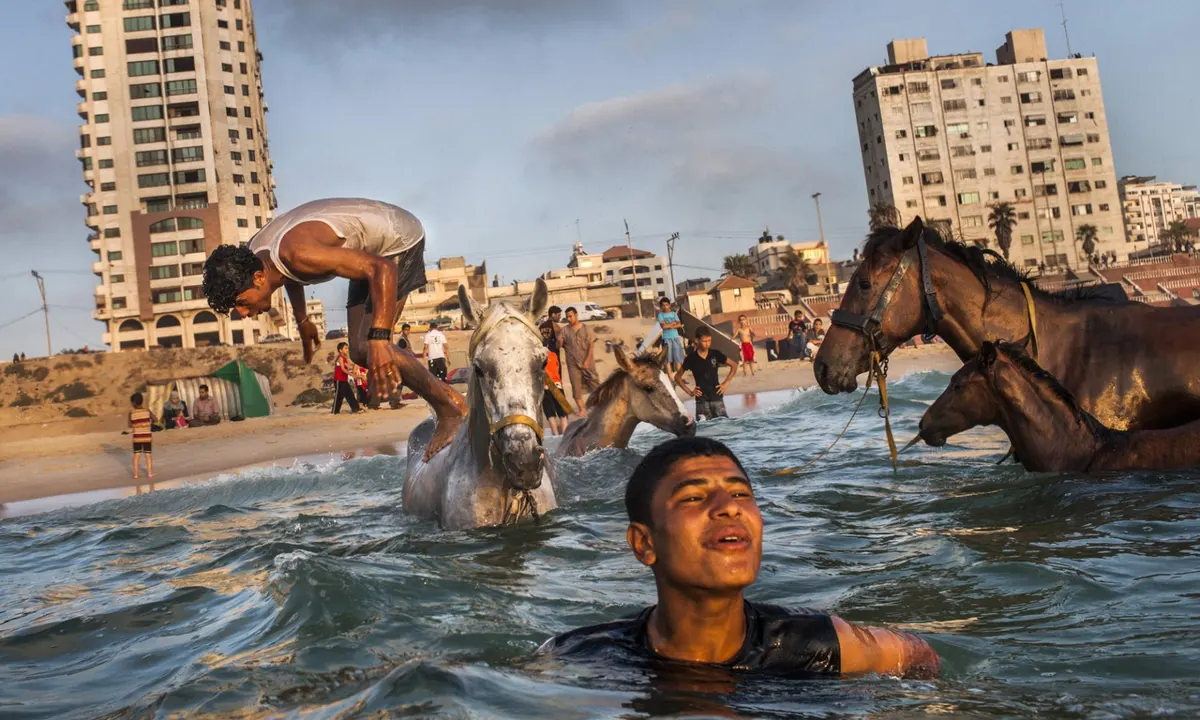An apartheid state like Israel has to justify its repression of the Palestinians in the occupied territories by defining them as totally foreign. So the generic other are all bloodthirsty terrorists or somehow uncivilised and uncultured, utterly below the status of the Israeli citizen. To say this is not to indulge in leftist exaggeration, we can listen today to the statements of leading members of the Israeli government or recorded evidence from many quarters of Israeli society. Here is just a selection:
- Dan Gillerman, a former Israeli UN envoy, called Palestians ‘inhuman animals’.
- Amichai Eliyahu, the heritageminister,r called for a nuclear weapon to be used in Gaza.
- Israeli soldiers were captured chanting racist slogans or saying that all Palestinians are involved in terrorism.
Just as during the British Empire, such an ideology was useful in ensuring soldiers or administrators carried out what was required for the colonial state. Israeli soldiers and aircrew need to be psychologically ready to carry out the mass murder of civilians.
This is why this film is so important. It does not particularly involve much political discussion or analysis. Yes, it shows the 2019 conflicts on the border, with young people throwing stones and getting hit by the Israeli army firing tear gas, rubber, or real bullets. Some of those interviews refer to the problems of living under the occupation and how it limits their lives. What the film does brilliantly is just tell the human story of six or seven characters chosen by the directors.

Indeed, the film started as a project about the surfers in Gaza. The other main character in the documentary is the sea, which visually marks out and surrounds the sequence of each speaker talking. We follow an extended family of fishermen, and one of the children dreams of becoming a fisherman like his dad. The older guys take him out on the boat, and we see how they are beginning to teach him the skills required. However, we learn how the Israeli navy corrals the Palestinian boats to a very strict limit off the coast. This restriction means the catches are too low to make much of a living. Heaven knows how difficult it is today with the bombings and the breakdown of water supplies. Sewage is going directly into the sea.
The sea is shown as one of the few beautiful places where Gazans of all ages can go and cool off, have fun, and get close to nature. There are great scenes of people in the sea in different lights and colours. I loved the bit where all the kids get a treat of barbecued sardines. Again, this is likely to no longer be the case at the moment. Life was already pretty grim when the film was shot, but you get a close-up of how the six characters do find a bit of relief and joy amid an infrastructure that had already been bombed to a degree and was lacking in other ways. Knowing the devastation inflicted on the place since then hits home very hard when you are watching the film.

The film revolves around the six or seven characters as they talk about their lives in turn: the taxi driver, a middle-class girl who plays the cello, the kids in the fishing family, an ambulance paramedic, a surfer, some older guys playing cards, and somebody working in theatre. Political parties are not mentioned, although a Hamas rally is filmed. In the Q&A session after the film was shown, the director said he had been in contact with nearly all the characters and they had made it so far, although he had no news of the taxi driver.
The director said afterwards that he found it very easy to find the ‘characters’ and people were welcoming. The second time he went back, however, Hamas people did insist on a lengthy interview about the film but did not restrict his work subsequently. The voices of women are heard in the film, with an older woman who worked in fashion and Karma, the young woman who played the cello (who is now a lawyer), but the director admitted that traditional gender roles meant there were some limits.
It feels as though, as you watch, that the Gazan Palestinians have invited you into their homes and neighbourhoods. Despite everything, the camera captures the beauty that exists in nearly all situations, even the most desperate ones. Scenes with the sea are particularly beautiful. There is a stunning scene with the young people and horses in the sea. As Karma explains, the open sea also represents a dream for the future, for their liberation.
Whenever I am there by the sea and breathe the air, I feel freedom. The feeling you get is hard to express in words.
The film went to the Sundance documentary festival in the USA, one of the most important showcases for this genre. However, while it has been shown in most of Europe, it was not picked up by any US distributor. It was shown on German and French TV, for example. Distribution in Britain was more limited. Today, it is available to see on YouTube and could be used as a whole or in extracts as a starter for a meeting on the situation in Gaza. A number of people at the show were keen to look at getting it shown in their local cinema or on national TV. As well as YouTube, there is a distribution agency called Wildcard that can be contacted.

